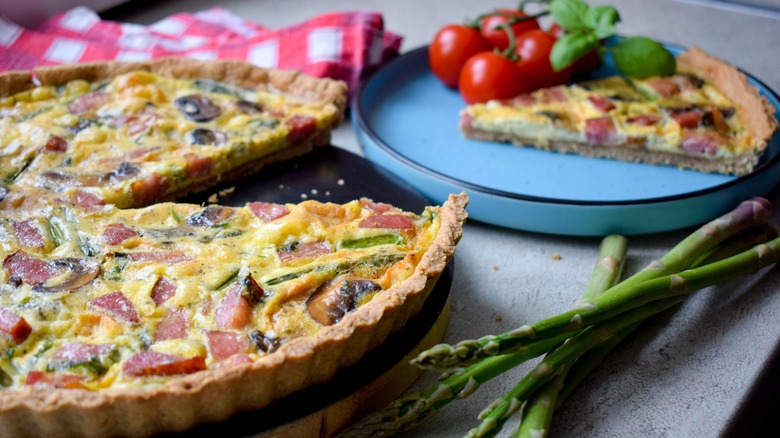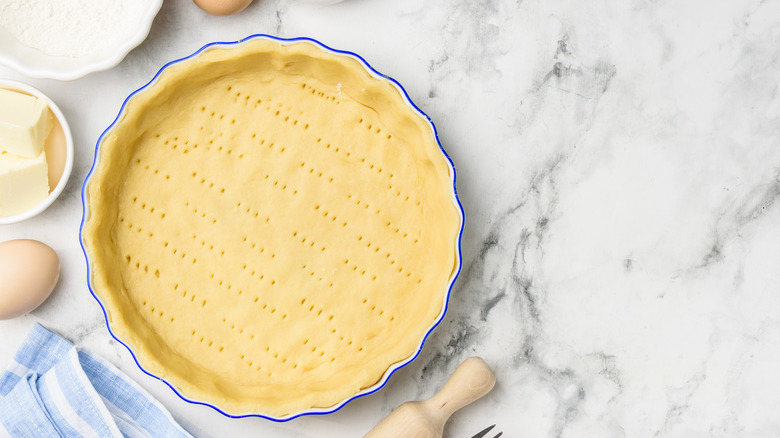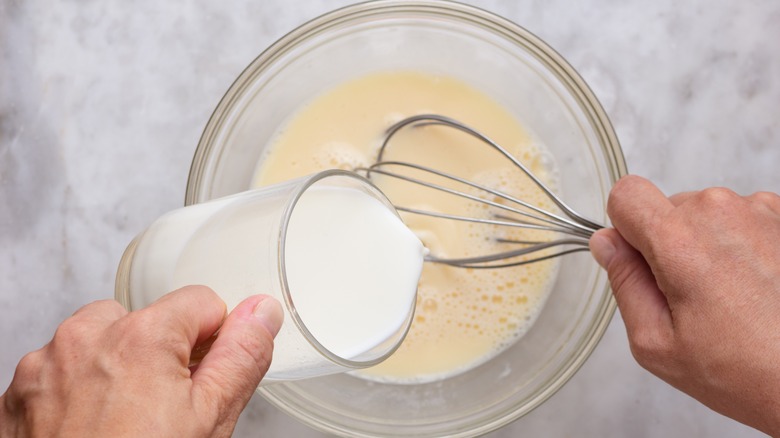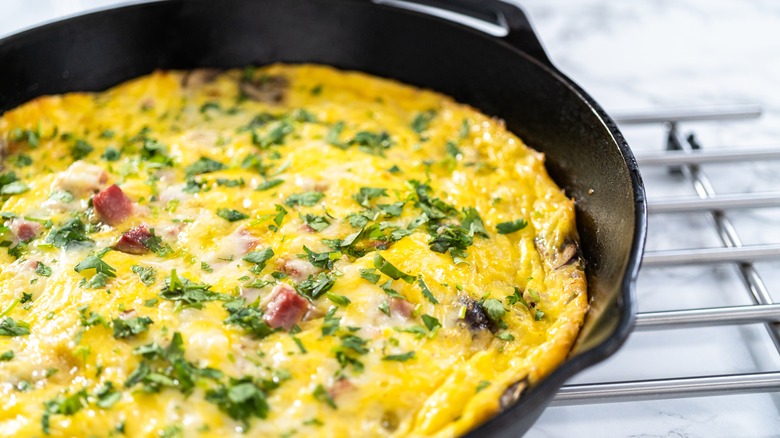Frittata Vs. Quiche: What's The Real Difference?
When you're craving a savory breakfast or brunch, a frittata or quiche is always a good move. Both are delicious egg-based dishes that can be mixed with vegetables, meat, or cheese and served any time of day. With all of these similarities, you may find yourself wondering if they're the same thing. The short answer is no, even though they do showcase many of the same flavors. You may think, "Doesn't one have a crust, and the other is crustless?" In theory, this is correct; however, there's more to it. Essentially everything from the ingredients involved to the way they are made is different, but we'll break that down for you.
For starters, quiches are quintessentially French, while frittatas are said to have Italian roots (via Mashed). Some may argue that they are the same dish from different places, but the biggest differences come down to the ingredients. So, before you end up confusing the two the next time you go to brunch, let's break down how these two dishes are different.
Crust or no crust? That is the question.
The crust is the thing most people start with when differentiating a quiche from a frittata, so that's where we'll start too. As stated before, quiche has a crust, and a frittata does not.
In order to make a quiche, first, you need to make your crust. Traditionally, quiche is baked in a standard pie crust, and the crust is either partially baked or blind baked before being filled with egg and milk. Partially baking will firm up your crust before adding the liquid filling, which is important so that you don't end up with a soggy product (via The Kitchn). Given this extra step, you'll need more time to make a quiche than a frittata — good to keep in mind when deciding what you can whip up for a quick Sunday brunch.
On the other hand, a frittata is typically contained in a cast iron skillet rather than a pie crust. This, along with some of the ratios we'll discuss later, make it a more egg-forward dish.
Custard or scramble?
Onto the next distinction, according to Food 52, a quiche is more similar to a creamy custard, while a frittata, on the other hand, can be compared to an egg scramble. While both quiche and frittata recipes tend to include some dairy, the ratio used is much different. As a rule of thumb, the ideal ratio of dairy to eggs for a frittata is for every dozen eggs, use one-half cup of dairy, according to Bon Appetit. They also recommend using a fattier dairy product, like whole milk.
According to The Kitchn, much more dairy is needed for a quiche, and the usual ratio is one part egg to two parts liquid dairy, or two eggs per cup of milk. This additional milk will create a much silkier, delicate custard for quiches. Everyone has their personal preference of which is better, but this is a huge differentiator when it comes to flavor and texture.
How do you make quiche vs frittata?
Last but certainly not least, the baking processes are different. There are two factors to be considered here: the cooking vessel and the cooking time. Given that quiches have crusts, they are made in pie or tart pans. Frittatas are made directly in skillets that are oven safe. According to Bon Appetit, well-seasoned cast iron is best for making frittatas because they will not stick. They note that heat conduction will continue to cook the egg after you take it out of the oven, so it's best to pull it out before it's fully finished. This will ensure that it doesn't not over-bake.
While the cooking vessel is important, we also must discuss cooking times. A frittata comes together much faster than a quiche. While most of the filling ingredients should be pre-cooked or at least sautéed, a frittata will bake for anywhere from 10-15 minutes, depending on its size and ingredients. A quiche, alternatively, can take 40-60 minutes to set — and that's not including the crust blind-baking time (The Kitchn). While it may be tempting to make a frittata over a quiche due to ease and time, there's still something special about the custardy result created by making a quiche. We love them both, will continue to eat both, and suggest you do too.



